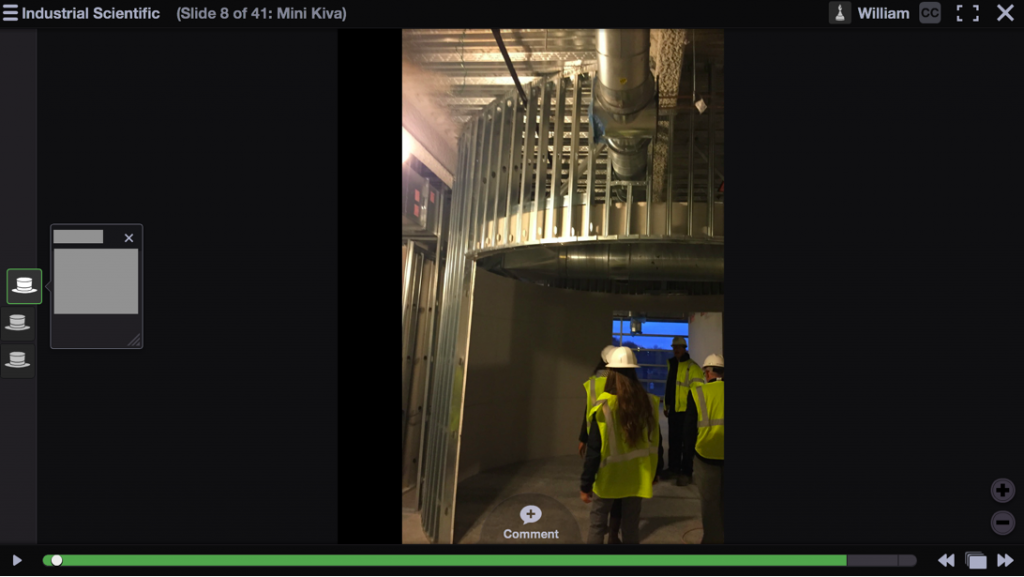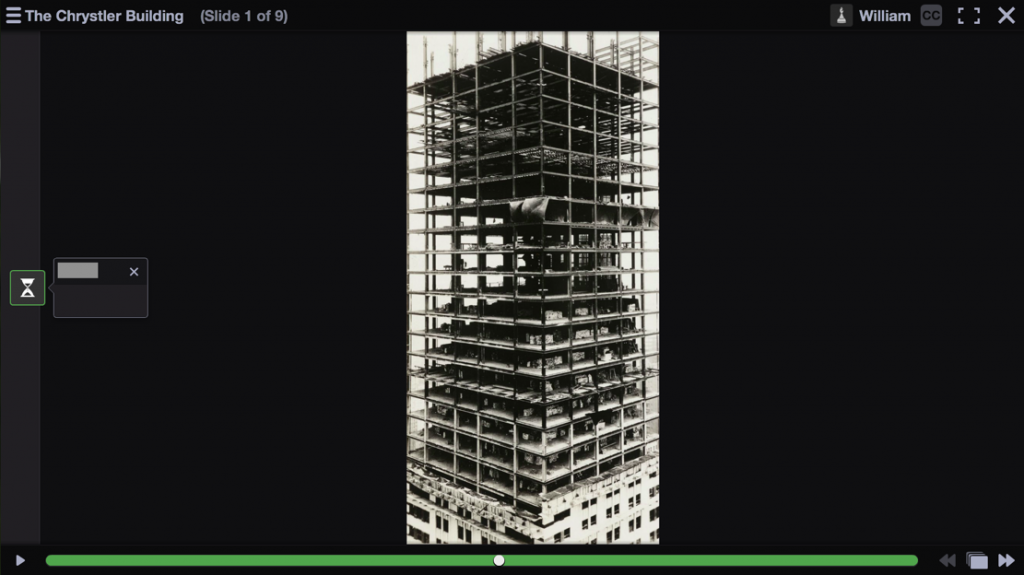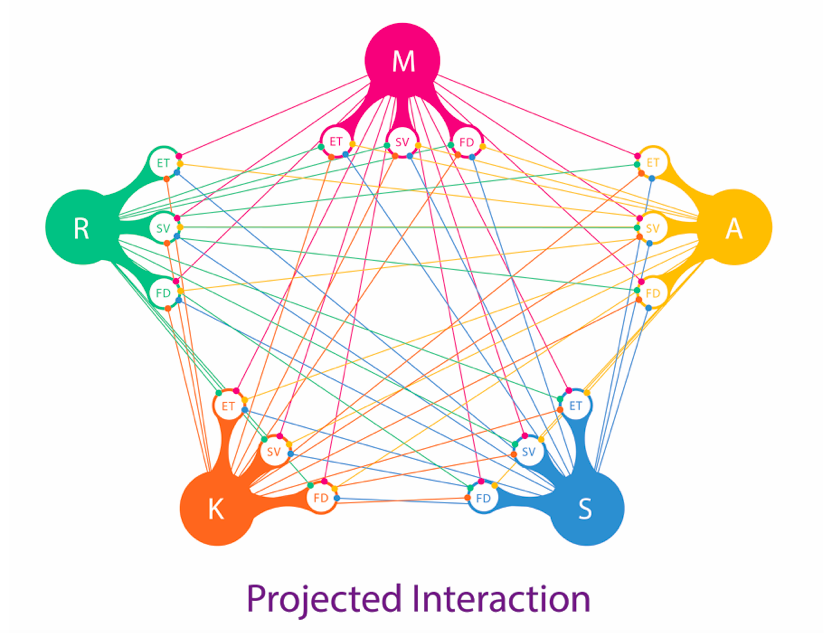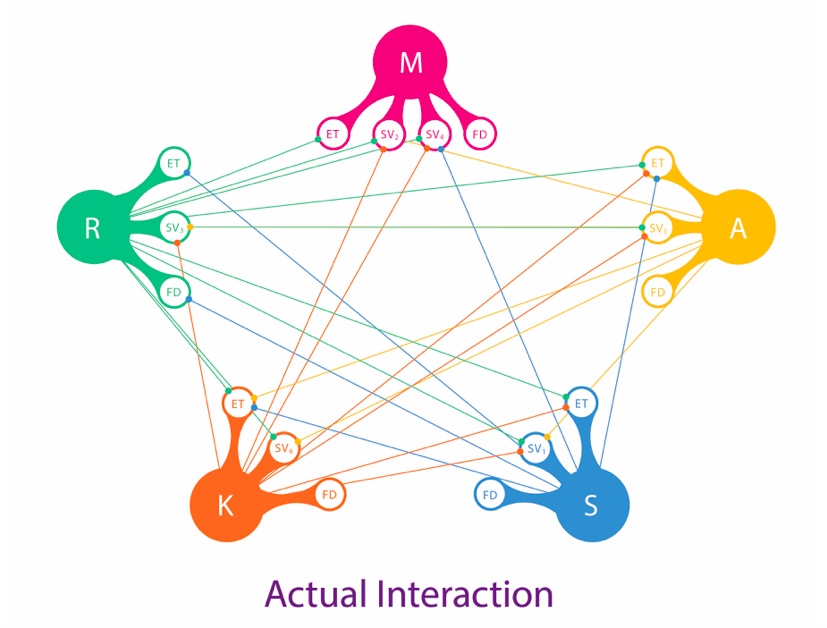
Using Threads of Technology to Enrich Lecture-Based Courses
William H. Biss, Jr., Chatham University
VoiceThread, a media-sharing application, is used to enhance student learning by providing more flexibility for student participation.
Introduction
In Architecture, Interior Architecture & Design education, technology is often utilized in studio-based courses as a tool in the design, production, and presentation of ideas. Lecture-based and non-studio courses are still delivered using traditional pedagogical methods, rarely exploring the technological potential beyond PowerPoint or Prezi. I wanted to explore applications that enhance learning not only through peer-to-peer interaction beyond the classroom, but also through different modes such as mobile devices and online platforms. My hope was that more engaging tools would provide flexibility to students who could not partake in some of the assignments due to time constraints.
Non-studio based courses such as Building Systems and Construction Methods have traditionally been delivered via lecture-based modes of instruction and measured through quizzes, exams, and perhaps small projects. In addition, students may be required to show their knowledge through research reports or presentations on a particular system or method. Although all viable forms of delivery and evaluation, the aforementioned, can be lacking in terms of student immersion in and applicability of the content. I decided to integrate a media-sharing application called VoiceThread as an attempt to enhance student learning both inside and outside of the classroom. Summarizing from the VoiceThread website, “VoiceThread is a cloud-based discussion thread with a focus on creating a true presence among its participants beyond traditional text-based interaction.” VoiceThread allows users to upload and share documents, images, audio, and video files. It also supports varying modes of discussion and commentary through audio, webcam/video, and text. In what follows, I will describe a strategy for supplementing a pedagogical approach to evening, lecture-based courses by attempting using mixed-mode instruction and blended learning beyond the classroom.
Setting
In the Masters of Interior Architecture Building Systems course, students learn about the various building systems that essentially make a building “work.” The mode of instruction is traditionally a combination of lecture, quizzes, exams, projects, and, perhaps most importantly, construction site visits. A construction site visit allows a student to experience in-progress construction where students witness many of the systems discussed in the course such as structural, mechanical, electrical, and plumbing systems. During the fall semester, the 7-week, graduate-level building systems course is held on Monday and Wednesday evenings, which, although best accommodates graduate student schedules, becomes challenging when attempting to coordinate site visits during working daylight hours.
Implementation
The implementation of VoiceThread was an attempt to solve the site visit by offering scheduling flexibility, as well as enhancing learning beyond the classroom. The 7 week, Monday and Wednesday evening course was reconfigured to contain one lecture-based class (Monday evenings), and in place of the Wednesday lecture, a “floating” site visit per week (see Appendix 1). Although encouraged, students were not required to attend all site visits. They were required, however, to attend at least one. Through compiling notes, sketches, photographs, and videos from the visit, they were required to create a corresponding VoiceThread presentation to share with the class. These video-based discussions offered flexibility and allowed the students to plan ahead in determining which site visit best suited their schedule outside of the Wednesday evening class time. In addition, each student was required to leave a video-based comment and participate on all site visit VoiceThreads (henceforth referred to as VTs) developed by their peers. This commenting requirement functioned as a means for generating an ongoing, symbiotic dialogue throughout the course.
Initially, students were reluctant to participate in the discussion thread using the video and/or audio method of commenting and, overall, they felt more comfortable using the text-based method only. We started using the software through an introductory exercise I developed called the “Everyday Task” VoiceThread. In order to help students overcome video/audio anxiety and gain familiarity with the software, I asked to create a short VT explaining an everyday task. Students developed very simple, 3- to 4-minute videos and image-based presentations on topics such as “How to Load a Dishwasher” or “How to Reheat Leftovers.” After watching the “Everyday Task” VT the following week, students quickly overcame any reservations and seemed to relax and enjoy the assignments.
The course continued with a total of 5 construction site visits over 5 weeks. The course ended with a Final Documentary VT of an architecturally significant building focusing on its integrated building systems. The Final Documentary VT project allowed me to evaluating student competency in both the VT application and the Building Systems course content. At the conclusion of the course, 5 students developed 16 VTs containing a total of 115 video-based comments.
Success/Challenges
Overall, VoiceThread offered flexibility to learning outside of the classroom, as anticipated. The VT dialogue among the students continued and evolved over the duration of the course in a fairly natural and organic manner. Peer-to-peer teaching/learning was evident from the VT authorship requirement for each student. In addition, the application gave a more interactive dimension to an otherwise lecture-based type of course. Aside from the expected learning curve that both students and I had to overcome, we were able to use VoiceThread quite successfully, using both the desktop and mobile applications.
Assessment
To compare my projected level of interaction with the actual level of interaction, I created an infographic to help visualize each of the 5 authored threads and the allocation of the 115 peer-to-peer comments. Each student is represented by their first initial and by a color, for example, “S” blue or “R” green, etc. This was very helpful in being able to quickly discern those who met all of the project requirements versus those who did not. The infographic also shows the three authored VoiceThread requirements for each student; the “Everyday Task,” the required “Site Visit,” and the “Final Documentary.”
As you can see, one student chose to develop an additional site visit from her concurrent internship, which I encouraged. Overall, the infographic shows a lack of peer-to-peer comments on the “Final Documentary” threads. However, I believe this was the result of setting the due date for the final thread to coincide with the last day of class. In the future, the Final Documentary will be due prior to the last day of class to allow time for final comments on the threads.
Next Steps
I will implement VoiceThread in future Building Systems courses. However, in order to better measure and evaluate the application’s effectiveness in this type of course, I will include a more quantitative method to collect student feedback. I expected that using VoiceThread would encourage students to interact more and have more dialog around their final videos, but the infographic showed that this was not the case. I realize that depending on the application alone was not enough, and that I have to state my expectations clearly and allow students more time to interact with each other, specifically for their final assignment.
Conclusion
Student feedback at the conclusion of the course (see Appendix 2) indicated an appreciation for the new approach to teaching and learning in an otherwise lecture-based course as well as a noticeable increase in peer-to-peer discussion outside of the classroom. Students also mentioned that the threads were most interesting and engaging if they had not attended that particular site visit. Although it was required that each student attend at least one site visit, many students were able to attend most, reducing the amount of useful discussion in the threads.
Integrating VoiceThread in the Building Systems course proved to be a positive and enriching experience as a whole and has prompted me to consider its vast potential within a design-oriented curriculum. Experimentation with alternative uses in other non-studio and/or lecture-based courses are being developed and planned for in the future.
Assistant Professor William Biss has taught in higher education for the past 8 years and currently teaches in the Interior Architecture program at Chatham University. His teaching experience and interests include design fundamentals, theory, digital technology, visual communication, building systems and residential and commercial design studios. In addition to teaching, he has also gained extensive experience contributing to the practice of multiple architectural firms over the past 12 years. Professor Biss continues his research interests on studio-based pedagogy, US company town planning and the influence, potentials and dynamics of sustainable infrastructure among todays “Rust Belt” cities, as well as, in developing countries.








'Using Threads of Technology to Enrich Lecture-Based Courses' has 1 comment
September 23, 2016 @ 7:10 am Introduction to VoiceThread – Digital Learning at Muhlenberg College
[…] Video Playlist on Teaching with VoiceThread curated by Michelle Pacansky-Brock W. H. Biss, “Using Threads of Technology to Enrich Lecture-Based Courses,” The Journal of Interactive Technology and Pedagogy, September 19, […]